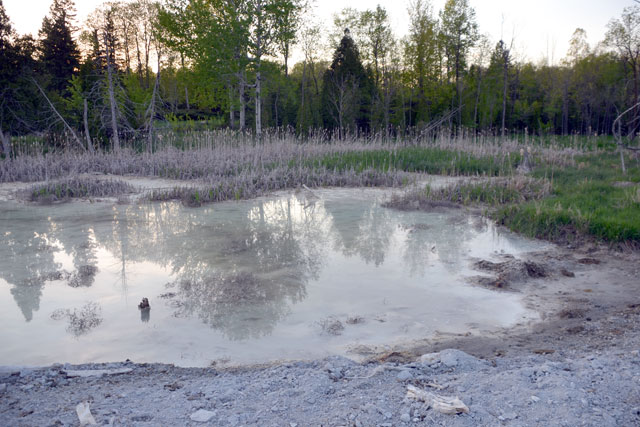Across Canada past mining activities have left a legacy of degraded environments and contaminated sites that were not rehabilitated by the mine operators and became public liabilities. These have included extreme cases of the privatization of profits and the socialization of costs like the Giant Mine in Yellowknife and the Kam Kotia Mine in Ontario along with many thousands of smaller sites that pose varying degrees of environmental and safety liabilities.
Industry and governments like to portray these issues as in the past and point to improved legislation for closure planning and requirements for financial assurances as providing the protections necessary to prevent these situations from arising again. There are, however, reasons to remain sceptical about the extent to which the public is being protected. A recent report by the Canadian Commissioner on the Environment and Sustainable Development relating to federal oversight in the Northwest Territories and Nunavut and a report from the University of Victoria’s Environmental Law Centre point to serious issues about the extent of oversight and amount of financial assurances that are being posted.
Two recent situations are raising concerns about the mine closure regime in Ontario, one is a the operation of a bankrupt mine that is about to be turned over to the province, another is an operating mine that does not seem to be meeting requirements of the Mining Act for “progressive rehabilitation”.
Inadequate Closure Bonds
Thanks to a blog post by environmental lawyer Dianne Saxe we became aware that Ontario would be taking over its first abandoned mine in a decade. The closed operation was an open pit magnesium mine just an hour and a half northwest of Ottawa. The company Timminco that operated the site has gone bankrupt and the overseers are now proposing to shed what remains of Timminco of responsibility by passing the magnesium mining site and another site in Quebec on to subsidiaries – which under a twisted aspect of corporate law relieves the parent company of responsibility.
According to Ontario’s Mining Act, the company was required to post financial assurances for closure. The amount posted, however, was only $900,000. The costs of just maintaining existing pumping, water treatment and testing had been over $320,000 a year – though documents filed for the proposed transfer of assets to the subsidiary indicate that the amount has been reduced by reducing testing and reporting in the winter.
In contrast to many metal mines, the main issue with the Timminco property is its highly alkaline effluent that has to be treated before being released to the environment. It is also contaminated with hydrocarbons and thorium and there are several electrical transformers and buildings that need to be dismantled. There is not, as far as we are aware, an estimate for the full rehabilitation of the site but there is little doubt that it will exceed the amount of the closure bond posted by a wide margin – leaving citizens of Ontario to pay for the remainder.
Are Mines Following Progressive Closure Requirements?
The Ontario Mining Act requires operating mines to undertake “progressive rehabilitation” which is defined as “rehabilitation done continually and sequentially during the entire period that a project or mine hazard exists”. This approach means should reduce risks during operation and decrease the costs and complexity of rehabilitation at closure.
North of Peterborough in the Kawartha Lakes area, a U.S. company – Unimin operates two nephaline syenite mines and a processing facility. The processing of the minerals has generated a large stack of dry tailings that have been creating problematic dust plumes in the air down-wind of the mines. Last summer Peterborough County Public Health Unit issued an advisory recommending that:
Anyone experiencing symptoms related to periods of high dust levels can reduce their exposure by staying indoors and using a HEPA type air cleaner that removes dust particles. Use of an air conditioner may also be helpful. Persons with persistent symptoms should see their personal physician.
A query to the Ministry of Northern Development and Mines indicated that the Ministry was not insisting on progressive rehabilitation of the tailings. The Ministry said that company’s closure plan would only apply after operations cease (permanently or for an extended period) and could not provide any documentation of a progressive closure plan. The MNDM did indicate that the company is voluntarily investigating progressive rehabilitation of the tailings. We wonder why the MNDM isn’t being more proactive about this and requiring such measures as they could substantially reduce the negative effects of the operation on the local community.
MiningWatch is going to continue monitoring these two cases but we are considered about what they indicate about mine closures across the province. We will be developing a petition to Ontario’s Environment Commission to investigate these issues and will continue to insist on greater transparency for mine closure in Ontario and in all jurisdictions across Canada. There is no reason why the financial assurances provided by companies can not be made public. If, in fact, they are adequate that full public disclosure could provide a greater level of confidence. If they are not adequate, the public has a right to know the risks we run of obtaining more environmental, safety, and economic liabilities.














